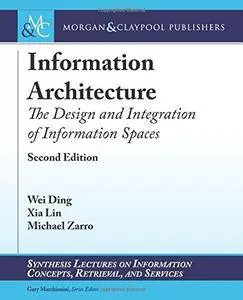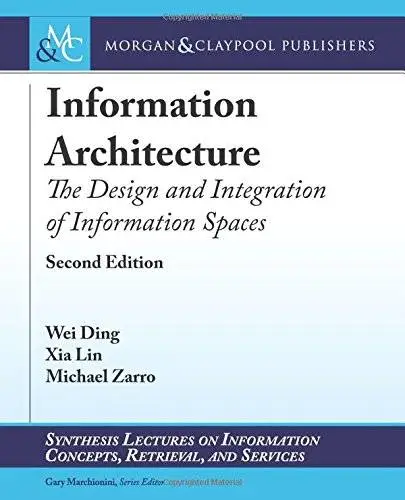Information Architecture: The Design and Integration of Information Spaces, Second Edition
Morgan & Claypool | English | 2017 | ISBN-10: 1627059768 | 152 pages | PDF | 11.91 mb
Morgan & Claypool | English | 2017 | ISBN-10: 1627059768 | 152 pages | PDF | 11.91 mb
by Wei Ding (Author), Xia Lin (Author), Michael Zarro (Author)
Information Architecture is about organizing and simplifying information, designing and integrating information spaces/systems, and creating ways for people to find and interact with information content. Its goal is to help people understand and manage information and make the right decisions accordingly. This updated and revised edition of the book looks at integrated information spaces in the web context and beyond, with a focus on putting theories and principles into practice.
In the ever-changing social, organizational, and technological contexts, information architects not only design individual information spaces (e.g., websites, software applications, and mobile devices), but also tackle strategic aggregation and integration of multiple information spaces across websites, channels, modalities, and platforms. Not only do they create predetermined navigation pathways, but they also provide tools and rules for people to organize information on their own and get connected with others.
Information architects work with multi-disciplinary teams to determine the user experience strategy based on user needs and business goals, and make sure the strategy gets carried out by following the user-centered design (UCD) process via close collaboration with others. Drawing on the authors' extensive experience as HCI researchers, User Experience Design practitioners, and Information Architecture instructors, this book provides a balanced view of the IA discipline by applying theories, design principles, and guidelines to IA and UX practices. It also covers advanced topics such as iterative design, UX decision support, and global and mobile IA considerations. Major revisions include moving away from a web-centric view toward multi-channel, multi-device experiences. Concepts such as responsive design, emerging design principles, and user-centered methods such as Agile, Lean UX, and Design Thinking are discussed and related to IA processes and practices.



